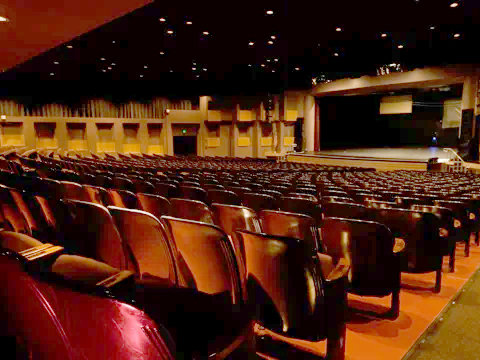A Destination for Dance!
Our Mission: The Orange Coast College Dance and Pilates Department is committed to creating an inclusive, diverse, equitable, and student-centered environment, serving our community by providing rigorous and effective training for both professional and nonprofessional dancers of all ages and skill levels. Our students are introduced to the artistry of the professional world through esteemed faculty and guests, and guided to explore their own creative potential, developing performance and evaluative skills through the integration of mind, body, and spirit.
Orange Coast College's Dance Department has enjoyed a national reputation for quality, creativity and comprehensive curriculum with courses in a variety of dance styles since 1962. Our Pilates instructor programs lead to direct employment- graduates teach in Pilates, Dance, or Fitness studios, recreational facilities, and health clubs.
OCC students have several opportunities to perform each semester in our 916-seat Robert B. Moore Theatre in works choreographed by faculty, students, and guest artists. Performance and choreography opportunities include the Fall Dance Concert, Spring Dance Celebration and the end-of-the-semester Student Dance Showcases.
Students also perform in festivals and invitationals throughout Southern California and participate each year in the American College Dance Association’s annual conference (Baja region), and in the Palm Desert Choreography Festival.
OCC offers a Dance Master Class Series, Artist Talks and Pilates Guest Speakers, often open to the public.
Our curriculum offers opportunities for life-long learners, prepares students for university transfer, and offers two Associate Degrees, A.A. in Dance and A.A. in World Dance, as well as Certificates of Achievement as Dance Instructor, Commercial Dance, World Dance Instructor, Comprehensive Pilates Instructor and Pilates Mat Instructor.
 Robert B. Moore Theatre
Robert B. Moore Theatre
Our 916 seat Robert B. Moore Theatre stage measures 40 feet wide by 32 feet deep and has a state-of-the-art basket weave sprung floor. The facility has dressing rooms and quick change areas to accommodate up to 60 performers. All OCC Dance productions, including Student Dance Showcase, are presented in this excellent theatre space that beautifully supports dance.
 Dance Studios
Dance Studios
We have two large dance studios (60'x40' and 50'x40') with state-of-the-art basket weave sprung floors, pianos, and the latest audio/visual equipment (large flat screen TV, computers, and integrated audio).
 Pilates Apparatus Studios
Pilates Apparatus Studios
Our Pilates studio is fully-equipped with reformers, Wunda chairs, Cadillac/Trapeze tables and additional small apparatus
2025
Doug Varone Company Dancers
Savannah Spratt - José Limón Dance Company
2024
Jennifer Backhaus - Director of Backhaus Dance
Taryn Chavez - Avanti Dance Studio
Disneyland Resort Talent Casting Team
Ardyn Flynt - Funkamental Medikinetics
Linda-Denise Fisher Harrell - Director of Hubbard Street Dance Chicago
Lisa Lindholm - Go 2 Talent Agency
Lisa Long, Associate Professor, Cal State Fullerton
Julie Opiel - BODYTRAFFIC
Alvin Rangel - CSU Fullerton, Chair of Dance
Sarah Stanley - Diavolo
Rachel Whiting - American Musical and Dramatic Academy (AMDA)
2023
Crystaldawn Bell - Robert Moses Kin Dance Company
Arletta Anderson - Ground Grooves Dance Company
John Carrafa - Twyla Tharp Dance Company, choreographer TV and film
Krystal Masteller - Summation Dance Company
Kate Skarpetowska - Lar Lubovitch Dance Company, choreographer
2022
Gregory Butler - Fosse’s Chicago
Colin Connor - Limon
Roz LeBLanc Loo - Bill T Jones
Ardyn Flynt - Funkamental Medikinetics
2021
Colin Connor - Limon
Chard Gonzalez - Cunningham
Robert Moses - Director of KIN
Ardyn Flynt - Funkamental Medikinetics
Ezra Lebank - partnering
Shannon Grayson - Horton
Chad Hall - Dance for the camera/ editing
2020
Gregory Butler - Fosse’s Chicago
Lilian Barbeito - Director of Bodytraffic
2019
Ardyn Flynt - Funkamental Medikinetics
Wendy Whelan - Artistic Associate of NYC Ballet
Robbie Shaw - Choreographing the camera
Leslie Carothers - Aromaa- Ballet Floor barre
Keith Johnson - Modern
Laura Rossini - Horton
